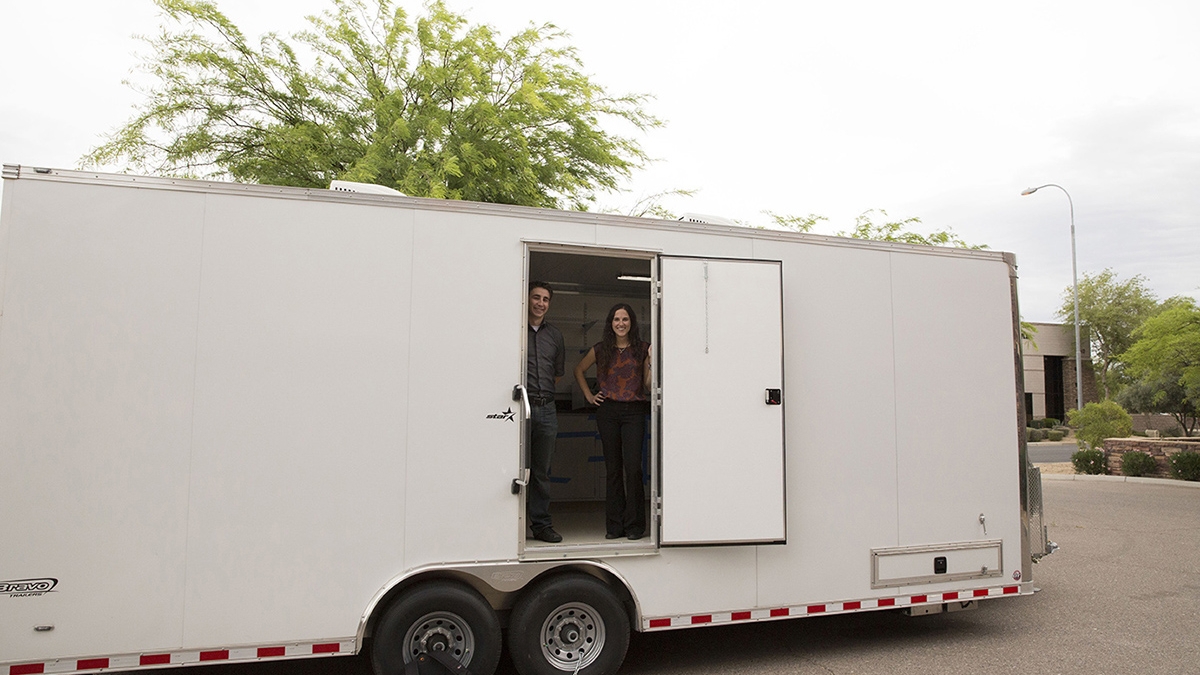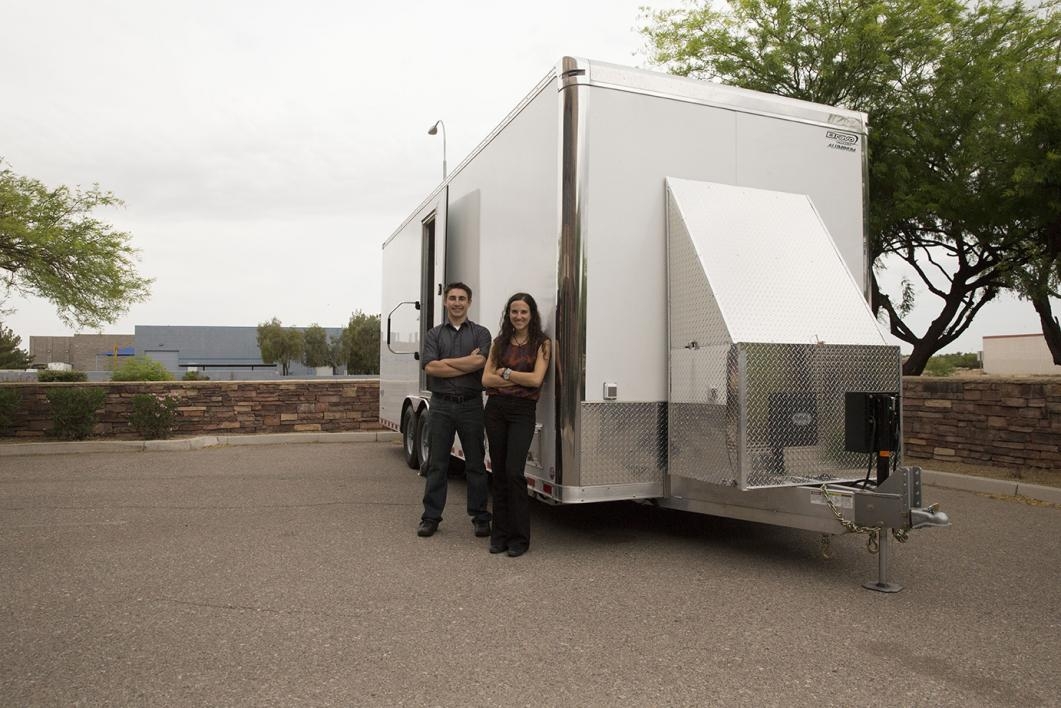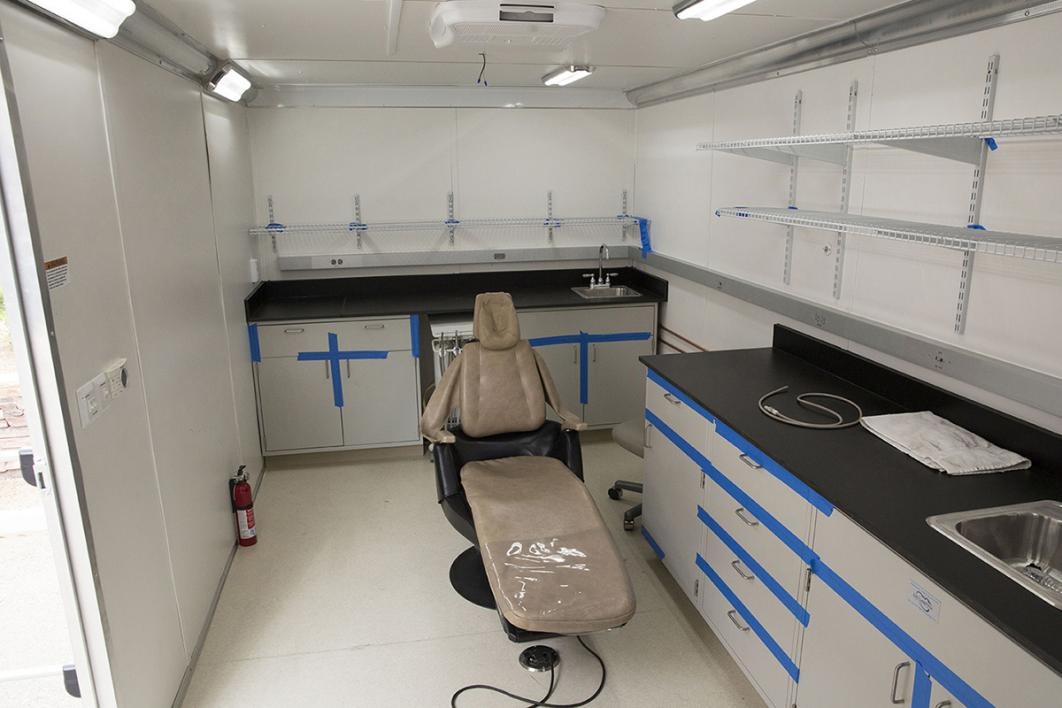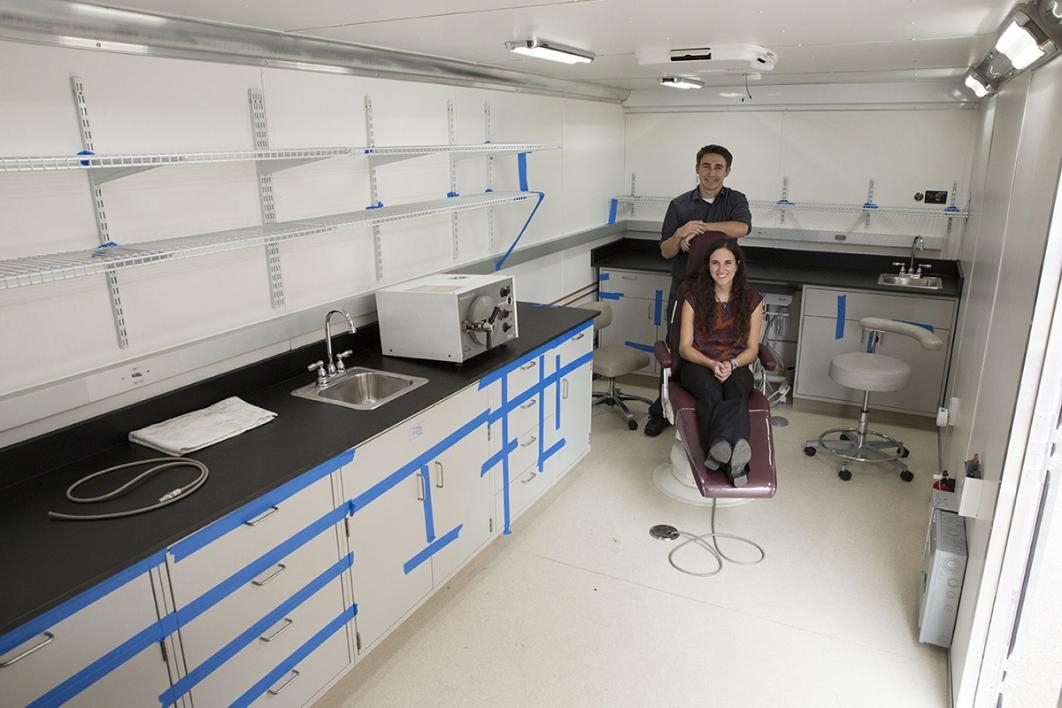After four years, $80,000 and innumerable obstacles, a team of ASU engineering students has completed a mobile dental clinic to dispatch to developing nations.
The team, Engineering Smiles, gained momentum from the Engineering Projects in Community Service program, which puts students together with nonprofits, community groups and governmental agencies to help solve problems and develop professional skills.
“Getting this finished is just about the best graduation present I could ask for,” said Sara Mantlik, the team leader.
For their project, Engineering Smiles partnered with California-based nonprofit IMAHelps, which organizes missions to Central and South America to provide medical and dental care to underprivileged populations.
Mantlik and fellow mechanical engineering graduate student Nick Kemme have been with the project since its inception, even as other team members have graduated or moved on to other work. They’re both slated to graduate with their master’s in mechanical engineering this spring.
“We were concerned we weren’t going to be able to finish our fundraising goal, but things really came together in the last month and a half,” Kemme said.
The completed clinic is housed in a trailer measuring 24 feet long and 8 feet wide and comes equipped with two dental operatories and a sterilization area.
Catalina Laboratory Products, a Tucson-based company, donated materials and services, including the clinic’s cabinetry, flooring and upgraded furnishings.
“They donated their time, materials and manpower. We went down to Tucson, picked out what we wanted for the trailer and laid it out how we wanted it,” Kemme said. “It was such a huge help.”
The air-conditioned clinic is powered by a diesel generator and can be set up in a range of conditions and operate self-sufficiently.
Mantlik, who went on a mission to El Salvador with IMAHelps in 2015, made the clinic’s self-sufficiency a priority.
“Sometimes they spend at least 12 hours trying to adapt what they have to fit the environment they’re working in,” Mantlik said of the IMAHelps missions. “That, combined with the unreliable power in the areas they work in, can mean almost 300 patients that don’t get care.”
Engineering Smiles soon will be handing the clinic off to IMAHelps, and the organization will take responsibility for getting it to Nicaragua. The clinic will reside at Universidad Católica de Nicaragua, where it will be used as a training aide for dentistry students when not in use by IMAHelps.
Following graduation, Mantlik is taking a break and traveling through Europe before going to work for GE Healthcare, entering its operation management leadership program.
Kemme will begin his career with General Atomics in San Diego as an optomechanical engineer, but not before taking a break to bike and camp in Zion National Park in Utah, as well as a family vacation to Hawaii.
“The Engineering Smiles team wants to give a special thanks to their top supporters, including Catalina Laboratory Products, Thomas Prescott, EPICS@ASU, Mr. & Mrs. Geyser, the Elliott Endowment Commitment, the A.T. Still University Physician Assistant Class of 2018, Mrs. Norton and Mr. Kern,” Mantlik said. “Due to the generosity and support of these and over 100 other individuals, the Engineering Smiles team successfully built a mobile dental clinic from inception to implementation.”
Top photo: The clinic is housed in a 24-foot long trailer, complete with its own diesel generator and air-conditioning. Unreliable power is a widespread issue faced on medical missions, as are difficult, remote locations IMAHelps travels to in order to serve underprivileged populations who need care. Photo by Pete Zrioka/ASU
More Science and technology

ASU-led space telescope is ready to fly
The Star Planet Activity Research CubeSat, or SPARCS, a small space telescope that will monitor the flares and sunspot activity of low-mass stars, has now passed its pre-shipment review by NASA.…

ASU at the heart of the state's revitalized microelectronics industry
A stronger local economy, more reliable technology, and a future where our computers and devices do the impossible: that’s the transformation ASU is driving through its microelectronics research…

Breakthrough copper alloy achieves unprecedented high-temperature performance
A team of researchers from Arizona State University, the U.S. Army Research Laboratory, Lehigh University and Louisiana State University has developed a groundbreaking high-temperature copper alloy…





